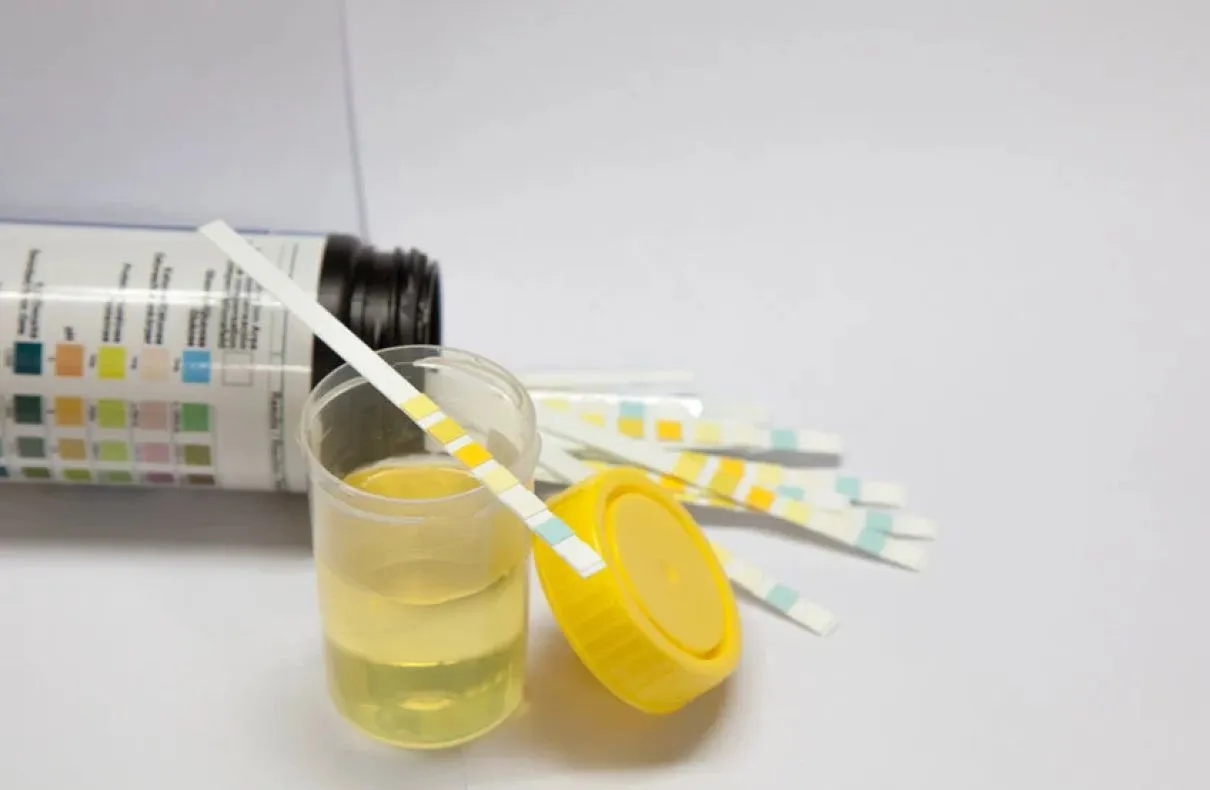We’re told to pay attention to changes in the color of our urine, because loss of its normal, yellow color can be a sign of a medical problem – but why exactly does urine turn yellow in the first place?
Turns out, scientists didn’t know the exact answer to this question until recently. Now, researchers have discovered that the golden color of urine is caused by an enzyme called bilirubin reductase, which is produced by bacteria in the intestine. Scientists reported their findings in a new study published Wednesday (Jan. 3) in the journal Nature Microbiology.
Scientists already knew that the yellow color of urine depends on how the body disposes of old blood cells. When red blood cells reach the end of their life cycle – usually after about 120 days – they are destroyed in the liver. One of the byproducts of this process is a bright orange substance called bilirubin, which is secreted from the liver into the intestine.
Apple Watch Banned For Revolutionary Blood Oxygen Sensor
Bacteria within the intestine convert bilirubin into a colorless substance called urobilinogen. This substance is then converted into urobilin, a yellow pigment that gives urine its color. However, until now, scientists have not been able to identify the specific bacterial enzyme responsible for converting bilirubin into urobilinogen.
The authors of the new study say this discovery could have potential health implications. That is, it could improve our understanding of the role of the gut microbiome – the community of microbes in the gut – in conditions such as jaundice, yellowing of the skin and eyes, or inflammatory bowel disease (IBD), chronic inflammation in digestion. Path. Jaundice develops due to a build-up of bilirubin in the blood, while people with IBD have been shown to have lower urobilin levels than adults without the condition.
“It is remarkable that an everyday biological phenomenon remained unexplained for so long, and our team is excited to be able to explain it,” said lead study author Brantley Hall, an assistant professor in the Department of Cell Biology and Molecular Genetics at the University of Maryland. , said in a statement.
The authors wrote in the paper that previous research on urine color was conducted before genomic sequencing technologies became widely available, making it difficult to identify which strains of bacteria were actually present in urine samples.
In the new study, researchers compared the genomes of human gut bacteria species that can convert bilirubin into urobilinogen and those that lack this ability. In this way, they identified the gene that encodes bilirubin reductase. They then tested whether the enzyme was able to facilitate this transformation in the model organism Escherichia coli, known as E. coli.
By searching for the gene in all gut bacterial species, they found that the enzyme is primarily produced by species belonging to a large group called Firmicutes, which dominate the human gut microbiome.
The team then examined the gut microbiomes of 1,801 genetically healthy adults, looking for genes that color urine. They found that 99.9% of people had bacteria in their gut that carried the gene for bilirubin reductase.
Philadelphia Tragedy: A Grim Tale of Execution-Style Shooting
They also searched for the gene in the gut of more than 1,800 adults with IBD and about 4,300 healthy infants and found that it was much less prevalent. This gene was found in only 68% of people with IBD, with 40% of infants younger than 3 months having a higher risk of jaundice.
The authors said more research is needed to explain this relationship and how the absence of bilirubin reductase may contribute to jaundice and IBD.
“Now that we have identified this enzyme, we can begin to investigate how the bacteria in our gut affect bilirubin levels and related health issues like jaundice,” said co-senior study author and investigator Xiaofang Jiang of the National Institutes of Health, said in the statement.
